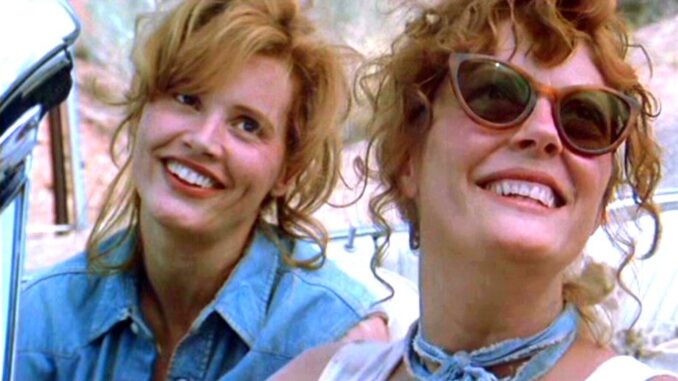
In Ridley Scott’s iconic film Thelma & Louise (1991), Thelma Dickinson emerges as a symbol of transformation, capturing the audience’s imagination with her journey from a life of submission to one of self-empowerment. This blog explores the depths of Thelma’s character, her evolution, and the broader significance of her journey, making it an engaging and SEO-friendly piece for fans of the film.
Thelma’s Confinement: A Life of Suppression Thelma begins the film as a meek housewife, suffocated by her domineering husband, Darryl. She lives in a world where her opinions are muted, and her desires are stifled. Thelma’s life represents the quiet desperation many women feel when trapped in a patriarchal society that values compliance over individuality. This initial portrayal of Thelma as a subdued character sets the stage for her remarkable transformation.
The Turning Point: Awakening Through Crisis The pivotal moment in Thelma’s journey occurs during the harrowing encounter at the bar, where she is almost assaulted. This traumatic event triggers something deep within her—a realization that she can no longer live passively under the thumb of others. Thelma’s decision to take control, albeit with the tragic consequences that follow, marks the beginning of her metamorphosis. The scene is a powerful commentary on how crisis can awaken a person’s latent strength, pushing them towards empowerment.

The Dynamic Duo: Thelma and Louise’s Complementary Strengths The relationship between Thelma and Louise is central to the film’s narrative. Initially, Thelma relies on Louise for guidance and protection, but as their journey progresses, she becomes more self-assured and takes an equal stance in their partnership. The dynamic between the two characters illustrates how support and solidarity can foster growth and change, making their bond a testament to the power of female friendship.
The Final Act: Choosing Freedom Over Submission The film’s climax, where Thelma and Louise choose to drive off the cliff rather than surrender to the authorities, is a bold statement on autonomy and freedom. Thelma’s final act of defiance symbolizes her complete rejection of the life she once led. Rather than return to a world where she is controlled and oppressed, she chooses to embrace freedom in the most profound way possible. This choice resonates with audiences, offering a commentary on the value of self-determination, even in the face of ultimate sacrifice.
The Legacy of Thelma: A Symbol of Empowerment Thelma’s journey is more than just a narrative arc; it’s a representation of the struggle for personal liberation and the fight against societal constraints. Her transformation from a submissive housewife to a figure of empowerment makes her a relatable and inspiring character for viewers. The legacy of Thelma in Thelma & Louise continues to inspire discussions on gender roles, autonomy, and the pursuit of freedom.

Leave a Reply